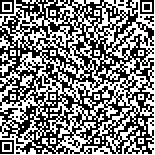| 引用本文: | 孙亚楠,金祖权,逄博,朱德举.基于DIC的混凝土嵌入式BFRP筋拔出行为及黏结性能研究[J].建筑材料学报,2023,26(1):45-52 |
| |
|
| |
|
|
| 本文已被:浏览 194次 下载 441次 |

码上扫一扫! |
|
|
| 基于DIC的混凝土嵌入式BFRP筋拔出行为及黏结性能研究 |
|
孙亚楠1,金祖权1,逄博1,朱德举2
|
|
1.青岛理工大学 土木工程学院,山东 青岛 266033;2.湖南大学 土木工程学院,湖南 长沙 410082
|
|
| 摘要: |
| 基于数字图像相关(DIC)技术对混凝土内嵌入式玄武岩纤维增强聚合物(BFRP)筋的界面黏结性能及其拔出过程开展了研究.采用数字图像采集处理技术获取了BFRP筋从混凝土表面拔出过程的应变场演变数据并计算了界面的黏结应力.结果表明:BFRP筋从混凝土表面拔出过程中,黏结应力与应变沿筋材呈现对称分布;随着拉拔荷载的增加,界面黏结应力、应变均不断增大,养护龄期为7 d的C50混凝土与BFRP筋的黏结界面在靠近加载端区域的最大应力和应变分别为3.3 MPa、0.020;与淡水河砂混凝土相比,当养护龄期达到28 d时,相同水胶比下海水海砂混凝土与BFRP筋界面黏结处的最大应力提高了19%左右;延长养护龄期可有效增大混凝土与BFRP筋的界面黏结应力;界面黏结应力和应变沿加载端到自由端呈线性下降趋势;拔出后加载端混凝土损伤严重,BFRP筋黏结段呈现部分纤维拉断剥离现象. |
| 关键词: 数字图像相关 BFRP筋 界面黏结 海水海砂混凝土 |
| DOI:10.3969/j.issn.1007-9629.2023.01.007 |
| 分类号:TU528.572 |
| 基金项目:国家自然科学基金资助项目(U1806225,52078259);泰山学者工程专项经费资助项目(ts20190942) |
|
| Pulling-out Process and Interfacial Bonding Performance of BFRP Bar in Concrete Based on DIC |
|
SUN Yanan1, JIN Zuquan1, PANG Bo1, ZHU Deju2
|
|
1.School of Civil Engineering, Qingdao University of Technology, Qingdao 266033, China;2.College of Civil Engineering, Hunan University, Changsha 410082, China
|
| Abstract: |
| Interfacial bonding performance and pulling-out process of basalt fiber reinforced polymer(BFRP) bars in concrete were studied by digital image correlation(DIC). The image acquisition and digital image correlation technique were used to obtain the strain field evolution data of BFRP bars during pulling-out from concrete surface and calculate the bonding stress. Test results show that the bonding stress-strain is symmetrically distributed along the BFRP bars during the pulling-out process. With increasing pulling load, the interfacial bond stress and strain increases continuously. The maximum stresses and strains at the adhesion interface between C50 concrete and BFRP bars in the region near the loading end with the curing age of 7 d are 3.3 MPa and 0.020, respectively. Compared with freshwater river sand concrete of the same water-binder ratio, the maximum stress of bonding interface between seawater sea sand concrete and BFRP bars increases by about 19% with the curing age of 28 d. Extending the curing age effectively increases the interfacial bonding strength between concrete and BFRP bars. The interfacial bonding stress and strain decrease linearly along the loaded end to the free end, and the concrete at the loaded end is severely damaged after pulling-out, and the bonded section of BFRP bars shows partial fiber pulling-out and peeling phenomena. |
| Key words: digital image correlation(DIC) BFRP bar interfacial bonding seawater sea sand concrete |
|